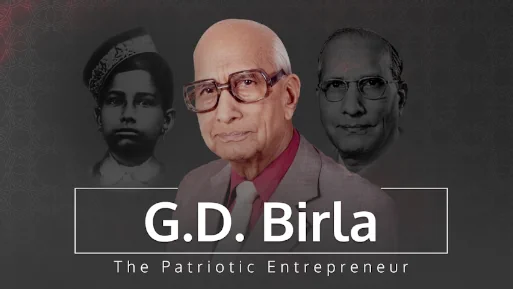With higher liquidity, banks are offering more third-party products
27 December, 2016 | Livemint
ShareFor life insurance companies that sell insurance policies with long-term investment guarantees, a downward trend in the interest rate means they may find it difficult to promise the same returns. Recognising this, Birla Sun Life Insurance Co. Ltd decided to re-file one of its non-participating products with a slightly lower rate from the new year. Pankaj Razdan, chief executive officer and managing director of the company, spoke toMintand explained what a low interest rate regime means for insurers, and the impact of demonetization. Edited excerpts:
What impact have demonetization and falling interest rates had on the life insurance sector?
In the short term, I am very bullish. With so much liquidity we are already seeing banks offering more third-party products to their customers. In November alone, banks have sold twice of what they sell in a month. Even over the long term, we are entering an era of lower interest rate.
Structural change has happened in the economy, which has made this possible. Earlier interest rates could never come down because 40% of the economy was running in parallel with black money.
Given that we are entering a lower rate regime, most traditional saving instruments are actually cutting down their outcomes in terms of returns. Banks have already cut down 100-200 basis points, whereas we are still offering a guaranteed return of 5% tax-free over a 25-year period. There isn’t a comparable product in the market. India parks about 45% of its savings in financial assets, of which 70% is parked in fixed deposits (FDs). It is an opportunity for us to sell a guaranteed product that also gives insurance.
But is 5% possible on new products even now?
When we design long-term products, we have a view of where interest rates will move and in what time horizon. We assess the tolerance level and the threshold at which the product becomes unviable.
Our guaranteed products were designed in such a way that even if the interest rate moves down to 6.5% in the next 5 years and then to 6% in the next 5 years and then to 5.5% over the next 5 years and so on, we will be able to give the guarantees as promised.
We expected the rates to be around 6% by 2017-18 when we designed our income assured product, but that has happened now, hence we will have to reset our guaranteed return (in the case of income assured plan).
We are already in the process of filing a new product with a slightly lower rate, so people who buy till December will get the advantage of higher returns.
Most non-participating products offer 4%. How have you been able to offer a higher rate?
Our idea was that we should be comparable to fixed return instruments and also offer a life insurance cover. A 5% return post-tax over 25 years is a great proposition, compared to an FD, which is taxable. Going forward, we expect regulatory reforms that will allow us to invest in new instruments or asset classes to improve yields. For instance, we may not need a derivative to protect our upside return but we certainly need it to protect our downside return. Investments overseas could also be explored. There are some sovereign investment options available abroad, which offer returns of 7-8% with decent credit ratings. In a critical low interest rate regime such investments will help generate commensurate returns.
To improve margins, companies have started focussing on protection products since these offer maximum margin. What’s your strategy?
The industry does about 3-4% of protection and we are no different. But my belief is that the industry will increase this to 10-12% and we want to be either at industry level or better than that. This is not because protection plans have margins in the range of 35-55% but because India is so terribly underinsured that protection is the most obvious gap. We want to fill that gap.
In terms of sales, we have moved to counselling-based engagement with clients where we help them identify gaps in life insurance and other financial needs. What product is sold becomes irrelevant because the sale is need-based and most people have bought only 10-20% of the life cover. This selling process through counselling will automatically boost protection-oriented products, which will also improve our margins.
Some say riders are not popular in India because distributors are not keen on selling them as the underwriting process only prolongs the sale. What’s your take?
If you look at the Asian markets today, they maintain margins of 40% and riders play an important role in it. Over a period of time, people have developed the art of selling life insurance with riders. That’s also because there is ease of underwriting since there is enough data available. In India it’s nascent, but in the last couple of years, people have become proactive. It’s only a matter of time before people start moving towards riders.
How important is having a bank as a distribution channel? What are your plans with your agency channel and will you be looking at other ways?
Given the penetration of banks, they become an important channel of distribution to build scale in a short period of time in a cost effective manner. I am a fan of the digital medium and it is definitely here to stay but agency is important. The challenge is to improve productivity and that’s been our focus. We have been able to improve the productivity of our agents by 30% in terms of premium collection in 2016. This year we have grown by 25% in the last three quarters and this is on the back of our agents selling more.
What are the three big events for the life insurance industry in 2016?
The insurance regulator has taken a series of measures in the interest of customers. Products have become more transparent, customer on-boarding has become simpler, there is push on digitization through e-issuance of policy regulation and e-KYC (electronic know-your-customer). All these steps will improve the customer experience, products and distribution.
Open architecture in distribution has meant that the large financial intermediaries like banks can now sell products of multiple insurers. This will lead to customers having increased choice and freedom to compare. The more informed the choice that the customer makes, the lesser is lapsation, so the customer will not run out from essential life coverage.






